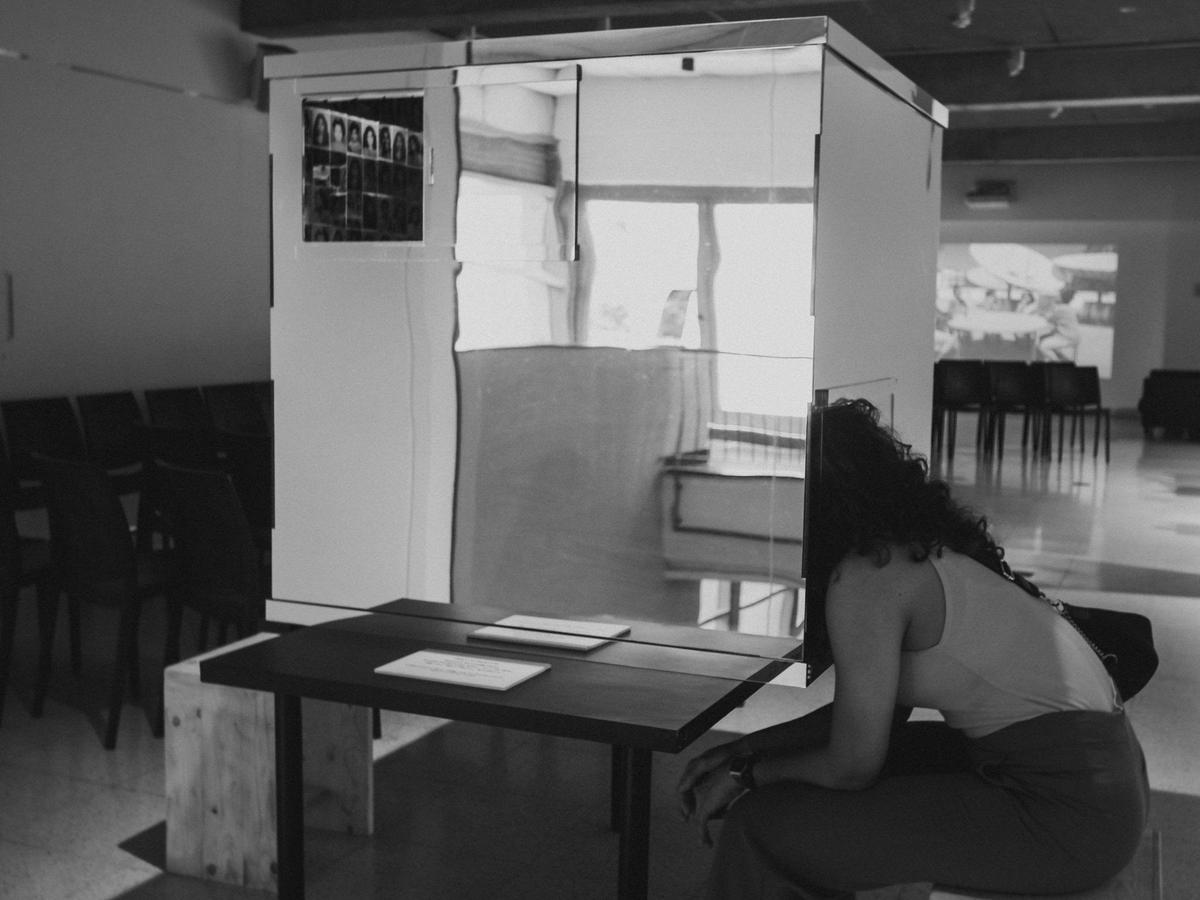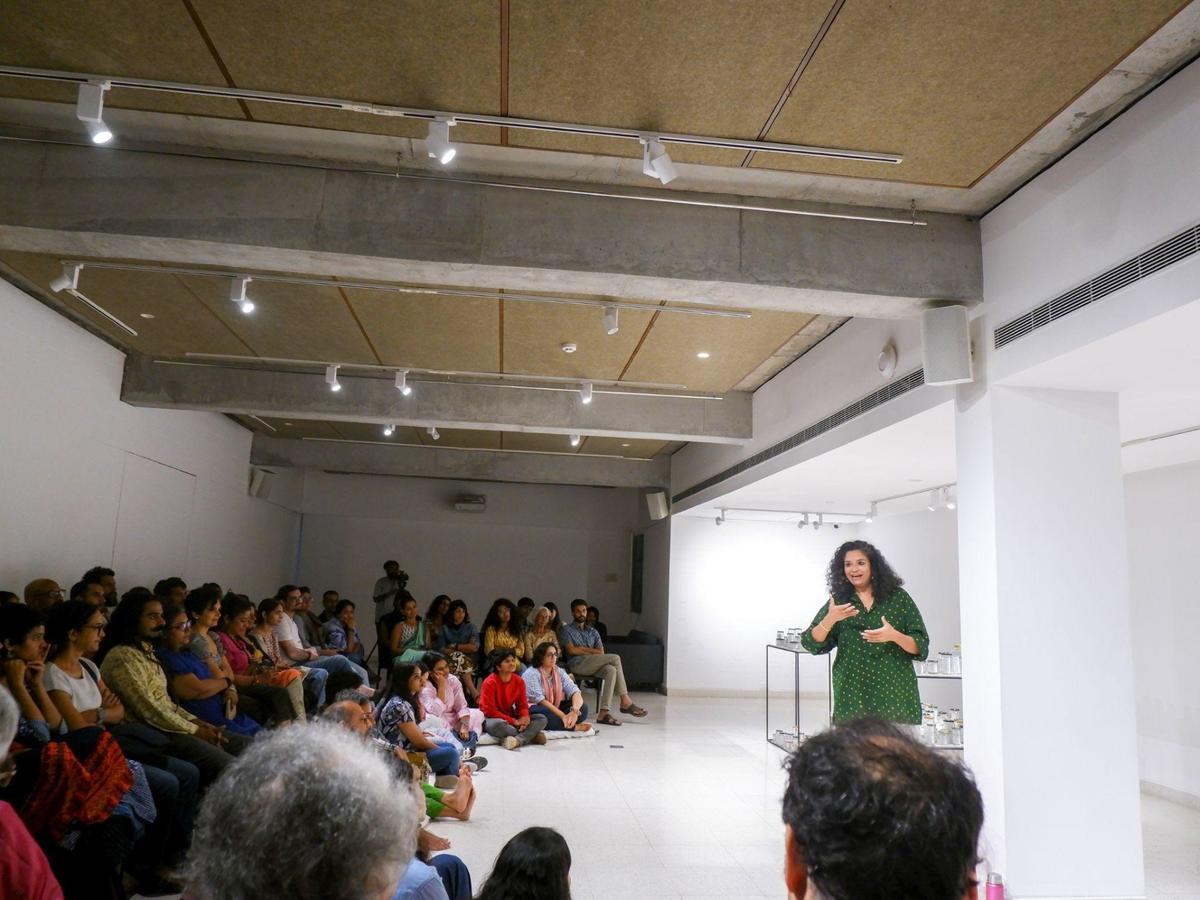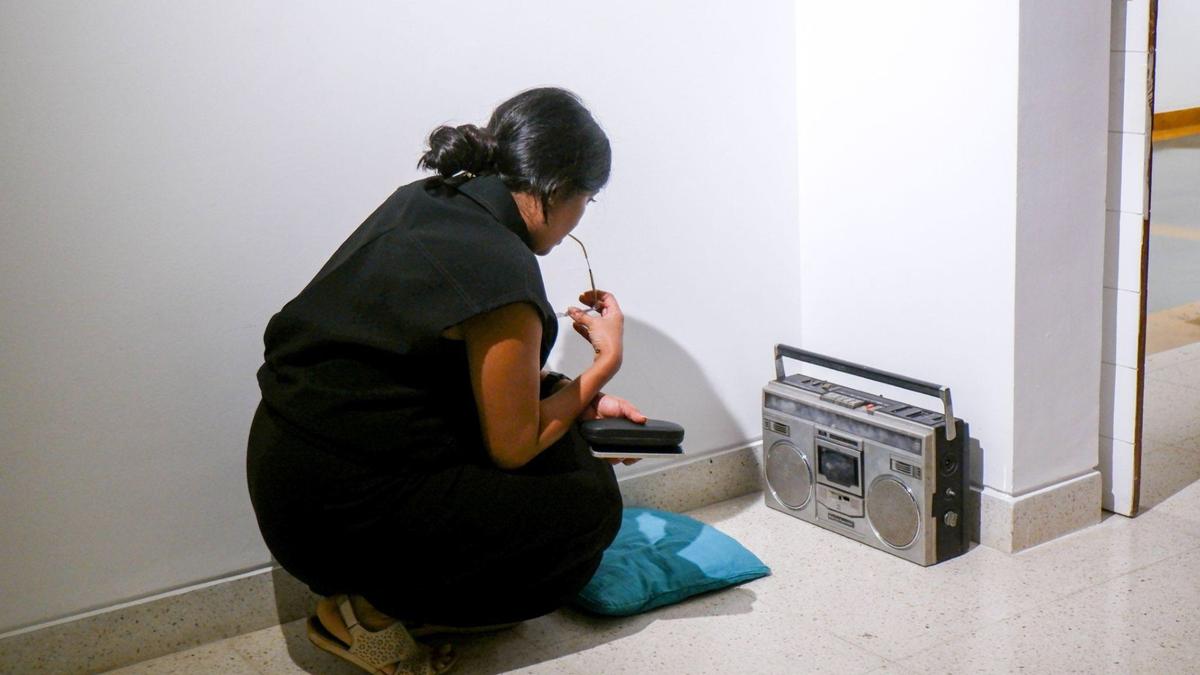The sound installation ‘Aakashvani’ reminds us of the developments of the 1980s and 1990s. Photo Courtesy: Aakriti Chandravanshi
A woman rolling a huge concrete slab on an open ground, what does that have to do with a woman sitting at a table with its many forms – folding and re-folding a napkin in different ways ? Possibly, nothing. Do images held in long-term memories retain the same meaning and associations over time? How do memories actually transform and fade? And what remains of the shared memory? These were some of the questions that came to my mind while experiencing Nimi Ravindran’s exhibition-performance, ‘To forget is to remember, to forget’.
Through film, art installation, recorded music, and a non-formal performance (complete with disclaimers and a prompter), Niemi led the audience through the journey of making this layered work while still displaying it. The description of a childhood without a mirror in the house revealed how it happened to be the only mirror in the house. By this point, the audience has met her mother, who wins a good amount of money in a singing competition through her brilliant “playback singer’s voice”, and thus, buys a wardrobe with mirrors. However, the mirror was accidental and was covered with a curtain. What was not accidental was the metaphor of the mirror in the context of this work.
Nimi’s memories (and the experiences they reflect) became, at some point, mirrors for the other people in the room. One audience member echoed her mother-in-law’s experience dealing with memory loss. The many shades of growing up in the 1980s and 90s – with ‘Chitrahaar’; In families that ran on public sector income, in families that wrote copious letters and evaluated people without fear of being called politically incorrect – explored in the performance.

‘Library of the Lost’, an interactive installation with bottled memories Photo Courtesy: Aakriti Chandravanshi
Of the art installations, the ‘Library of the Lost’, with its neatly bottled memories and photo booth, with its layered visual and auditory input, emerged as a favourite. The random ways in which we remember (and forget) were highlighted by art installations.
“None of it was planned the way it turned out,” Niemi says of the work she almost gave up on, more than once in the last decade. She began writing it as a play, but soon realized she “simply wanted to tell the story of a daughter struggling to remember all the things her mother had forgotten.” The more she remembered, the more “the facts became blurred” and she became aware of a “dramatic reconstruction”. Her intention was to “navigate the ambiguous landscapes of loss and memory through photographs, objects, film, and songs and sounds,” she says.

An installation titled ‘Photo Booth’ Photo Courtesy: Aakriti Chandravanshi
Although her mother plays a central role in the work, Nimi sees it as filled with many characters and much more than her mother’s story. For him it is, “an exploration of what we remember and why and what we forget and how.” As a producer of theater and performance work through the Sandbox Collective, which she co-founded, some creative aspects of the project were known while others, such as the new media parts, she found challenging. Having colleagues whose skills informed different aspects of the work helped a lot, she says.

Nimi Ravindran in exhibition-performance. Photo Courtesy: Aakriti Chandravanshi
Sujay Sapele designed the overall project, as well as acting as a playwright. Sachin Gurjale and Ban Ji worked on the sound design; Cinematography and editing for the films conceived by Nimi was done by Ben Briscoe (with additional editing by Samrat Damayanti); Rensi Philip and Nimi designed the photo booth and Aakriti Chandravanshi provided image design assistance. Charulata Dasappa managed the production (assisted by Surabhi Vashishtha) while also contributing songs to ‘Aakashvani’ exhibition along with Bindumalini Narayanaswami, Pallavi MD, Mansi Multani, Deepti Bhaskar and Nimi. Weaved together from many creative voices, ‘To Forget Is To Remember Is To Forget’ contains many memorable images and poignant moments.
published – January 21, 2025 06:35 PM IST
